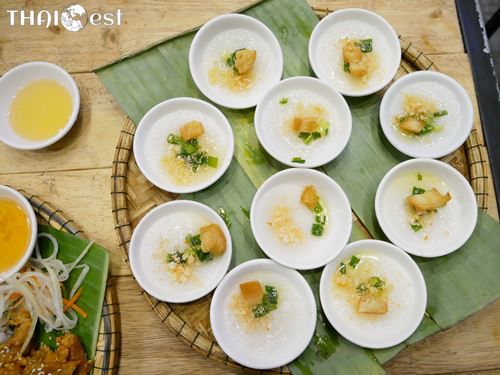Hue is one of the most attractive cities in Vietnam, located on the banks of the Perfume River. As the ancient capital of Vietnam, Hue has a long history and many tourist attractions for you to explore and learn about Vietnamese culture and history.
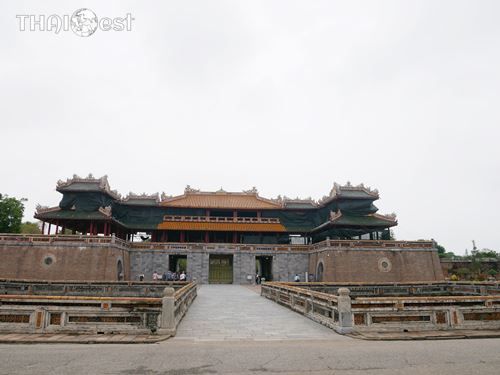
With many mausoleums, monuments, unique buildings, beautiful beaches and the romantic river, the city brings tourists amazing experiences. If you are planning a trip to Hue in the near future, here is the list of top tourist attractions in Hue that should not to be missed during the visit.
Hue Imperial City (The Citadel)
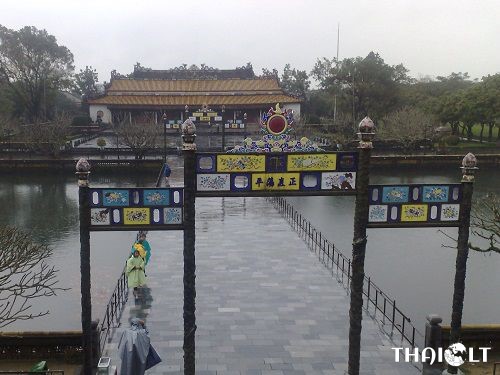
The Imperial City or the Citadel is a walled palace in Hue, located in the north of Perfume River, facing south with a total area of 520 hectares. This is the first place you should visit when traveling to Hue. The Citadel was recognized by UNESCO as a world cultural heritage site in 1993, which clearly shows the importance of the ancient capital of Hue. The large complex of buildings features hundreds ruins of ancient palaces, magnificent temples and monuments with unique architecture from the times when Hue was the royal capital of Vietnam's Nguyen Dynasty. The Citadel is a unique combination of traditional Vietnamese architectural principles, Eastern philosophical ideology, the theory of Yin and Yang, the five elements and Western military architectural influences. The Citadel is massive so you can easily spend half day or the whole day exploring it all in details.
Some of important monuments in Hue Imperial City include:
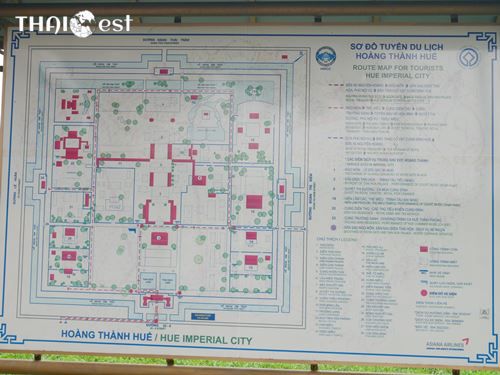
- Nine Holy Cannons: 9 cannons are considered as one of the most valuable bronze works of art. Ancient nine cannons were placed at the foot of the Imperial Citadel, at the entrance of the Ngo Mon Gate - the Imperial City of Hue. During the reign of King Khai Dinh, they were relocated to their current position.
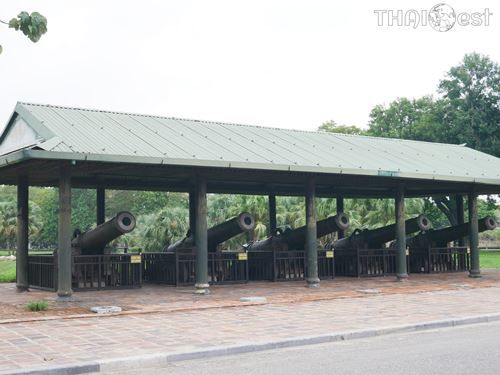
- Noon Gate (Meridian Gate or South Gate): This is the main gate to the Imperial City built in 1833 under the rule of King Minh Mang in the traditional Vietnamese style and used by the kings for troop movements and important ceremonies. This is also the place where King Bao Dai proclaimed his abdication in 1945.
- Flag Tower: Flag tower is the main focal point of the Imperial City and the symbol of the greatness of Hue. This is an architectural monument of the Nguyen Dynasty located in the middle of the south face of Hue Citadel, in front of the Noon Gate, within the Nam Chanh fortress which is also the place to hang the flag of the royal court.
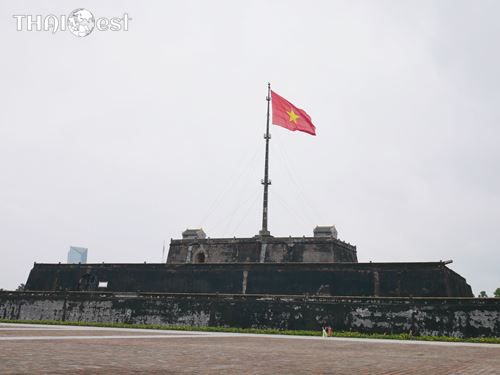
- Supreme Harmony Palace: This Palace is located in the Imperial City area of Hue citadel, which is the coronation place of 13 Nguyen kings from Gia Long to Bao Dai. In feudal regimes, this palace was considered the center of the country.
- Nine Dynastic Urns: These are nine bronze urns, located in front of The Mieu Temple in Hue Imperial Citadel. The Nine Peaks was commissioned by Emperor Minh Mang in the winter of 1835 and inaugurated on March 1, 1837.
- The Mieu Temple: The Mieu temple also called The To Mieu was built in 1821 by the second king of the Nguyen Dynasty - Minh Mang. This is the temple dedicated to worshiping 10 kings of the Nguyen Dynasty.
- Dien Tho Palace: Dien Tho Palace is a system of palace buildings in Hue Imperial Citadel that was used as the residence of the Queen Mothers. Located in the western part of the Forbidden City, north of Phung Tien Palace and south of Truong Sanh Palace, Dien Tho Palace is considered to be the largest scale palace architecture system remaining in Hue.
- Thai Hoa Palace: Of all the palaces of Hue Citadel, Thai Hoa Palace is the most luxurious, largest and most beautiful palace. It is considered the heart of the capital because it is the place where the throne, a symbol of power of the Nguyen Dynasty, was housed. It is also the venue for important ceremonies such as coronation and king's birthday celebration.
- Forbidden Purple City: Forbidden Purple City belongs to a complex of the ancient capital of Hue which is the center of daily life of the kings of the Nguyen Dynasty. Forbidden City, located behind Thai Hoa Palace, was built in the third year of Gia Long’s reign (1804) and was called the Imperial Palace. In the third year of Minh Mang's reign (1822), the king changed the name to Forbidden Purple City.
- Hue Royal Antiques Museum: This was the Long An Palace built in 1845 under the reign of King Thieu Tri. The palace was used as a resting place for the Emperor after ceremonies and other related events. In 1923, King Khai Dinh decided to turn this palace into a museum so the architecture of the Royal Palace is still kept under the new name of Museum. The museum has a collection of 10,000 items dating back to the Nguyen Dynasty from 1802 to 1945. It also has different artifacts coming from other Asian countries consisting of wood, gold, pottery, ivory, bronze, stone, jade, ancient coins and royal seals. A visit to this museum will give you an overview of the golden lives of the Nguyen kings in the past.
- Tinh Tam Lake: Tinh Tam Lake is a famous landscape in the heart of the Hue Citadel, built during under the reign of King Thieu Tri. It is considered as one of the 20 most beautiful scenes of this country.
Entrance fee: 200,000 VND
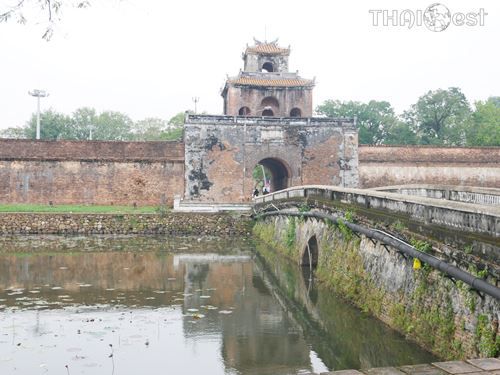
You can join Hue Discovery Half or Full Day Tour to visit all the best tourist attractions in Hue such as the Imperial Citadel, Forbidden City, Thien Mu Pagoda, the Tombs of past Nguyen emperors as well as get on a boat for sightseeing along the Perfume River.
Royal Tombs in Hue
Besides the Imperial City of Hue, the tombs of the Nguyen kings are places that should not be missed. Currently, there are a total of 7 tombs in Hue and each tomb has its own architecture and interesting historical stories behind them. The most famous tombs that you should visit are Tomb of Tu Duc, Tomb of Minh Mang and Tomb of Khai Dinh, attracting a large number of tourists every year.
Tomb of Tu Duc
Tomb of Tu Duc is located on Van Nien Hill in Duong Xuan Thuong village, 5 km south of Hue. This imperial tomb is the most impressive of the royal mausoleums in Hue as its unique architecture is in the harmony with natural scenery. The tomb was built for the Emperor Tu Duc who was the longest-reigning monarch of Nguyen Dynasty. Tomb of Tu Duc is one of the most beautiful tombs of the Nguyen Dynasty and looks like a large park with magnificent scenery. Tomb of Tu Duc can be explored in about 2 hours.
Entrance fee: 150,000 VND
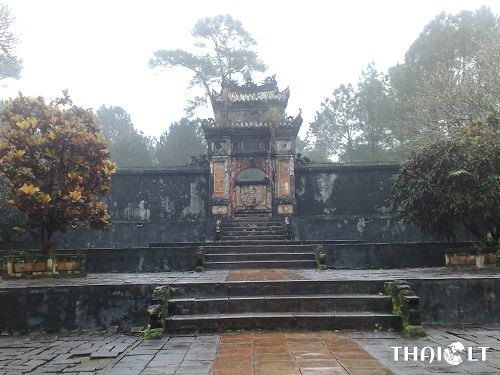
Tomb of Minh Mang
Tomb of Minh Mang, also known as Hieu Lang, is one of the most famous mausoleums of emperors in Hue. The royal tomb is located on the western bank of the Perfume River, about 12 km south of Hue City. This tomb was planned and started by Minh Mang, the second king of Nguyen Dynasty, but built by his successor, King Thieu Tri, from beginning of 1840 to1843. In the complex of the Royal Tomb of King Minh Mang you can find various palaces, temples, pavilions and other majestic structures fitting well with the ponds and surrounding charming mountains and landscape.
Entrance fee: 150,000 VND
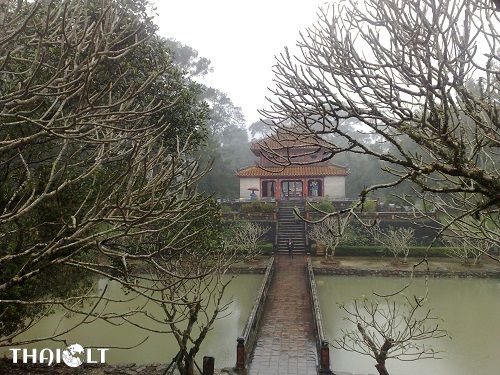
Tomb of Khai Dinh
Tomb of Khai Dinh, also known as Ung Lang, is located at the foot of the mountain Chau Chu, 9 kilometers south of Hue. The tomb was built for the 12th Emperor of the Nguyen dynasty - Khai Dinh. The tomb was built in 1920 right after Khai Dinh ascended the throne. This is the smallest tomb (48.5x117 m) of the Nguyen Emperors, but it cost a lot of money and took the longest time to build it. Tomb of Khai Dinh is an unusual imperial tomb as its architecture is a good combination of modern European and classical Vietnamese architecture, with unique porcelain-mosaic artworks.
Entrance fee: 150,000 VND
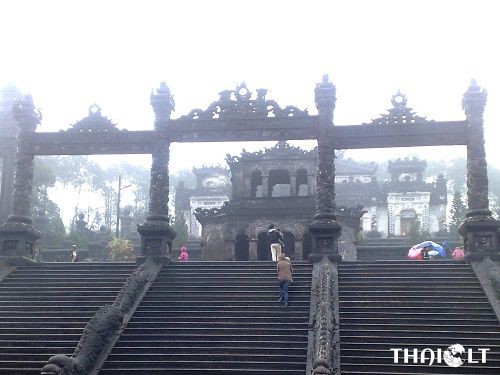
Tomb of Gia Long
Tomb of Gia Long, also known as Thien Tho Tomb, was completed in 1820. Tomb of Gia Long is not only the tomb of King Gia Long, the 1st King of Nguyen Dynasty, but also a complex of many tombs of the royal family. The entire tomb is located in the middle of Thien Tho mountain range, consisting of 42 large and small hills, of which Dai Thien Tho is the largest mountain chosen for building the tomb.
Entrance fee: 50,000 VND
Tomb of Thieu Tri
Tomb of Thieu Tri, also known as Xuong Lang, is located in Cu Chanh village. Tomb of Thieu Tri was built by King Tu Duc in 1847 to bury his father Thieu Tri. Compared to the tombs of the predecessors and successors, Thieu Tri tomb has its own characteristics. This is the only tomb facing northwest and not enclosed by a wall, rarely used in palace architecture during the Nguyen Dynasty.
Entrance fee: 50,000 VND
Tomb of Dong Khanh
Tomb of Dong Khanh, also known as Tu Lang, is located in the middle of a rural area in Cu Si village (now Thuong Hai Village). It is really close to the more famous Tu Duc Tomb which can be easily reached by 5 minutes of walking. Tomb of Dong Khanh is small if compare to other royal tombs and divided into two areas, the tomb and the temple, 100 meters apart.
Entrance fee: 50,000 VND
Tomb of Duc Duc
Tomb of Duc Duc is located in Tay Nhat village, less than 2 km from the city center. There are tombs of three Nguyen kings: Duc Duc, Thanh Thai and Duy Tan. King Duc Duc reigned for only 3 days in 1883. This tomb is perhaps the smallest of the tombs of the Nguyen Dynasty and it is fairly abandoned.
Thien Mu Pagoda
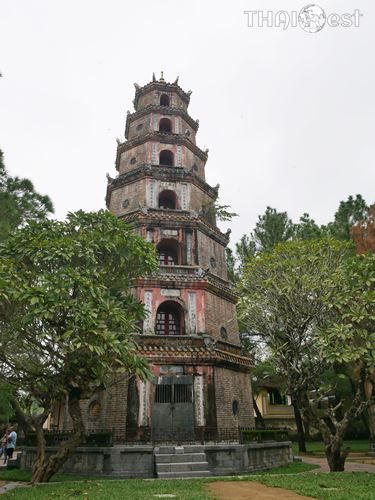
Thien Mu Pagoda, also known as Linh Mu Pagoda, is also a famous tourist attraction in Hue. It is a historic temple located 4 kilometers from the center of Hue. This seven-story pagoda sits on the hill on the northern bank of the romantic and peaceful Perfume River. Thien Mu Pagoda has become the most popular pagoda in Hue because of the quiet space and charming natural scenery. This pagoda is housing the golden and silver image of Buddha. To get to Thien Mu Pagoda, you can take a dragon boat along the Perfume River from the city center.
Entrance fee: Free
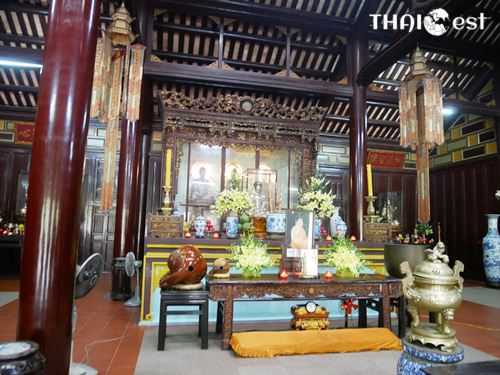
Tu Dam Pagoda
Tu Dam Pagoda is a Buddhist temple located in Truong An, 2 km south of Hue, so you can easily reach it by car, local bike or boat. The general architecture is called “Hoi pagoda style” with a combination contour art between modern architecture and ancient architecture. Tu Dam Pagoda has three important parts: three-door temple gate, main pagoda and Hoi area.
Tu Hieu Pagoda
Tu Hieu Pagoda, located 5 kilometers southwest of Hue City, is one of the largest and most beautiful ancient temples in Hue. Tu Hieu Pagoda, hidden behind a vast pine forest, is a temple associated with the story of the filial piety of the son with the elderly mother.
An Dinh Palace
An Dinh Palace, located on the bank of An Cuu River, is the private palace of King Khai Dinh and also the place where the last king of the Nguyen Dynasty, King Bao Dai chose to stay when he abdicated to leave the Royal Palace. Up to now, on Hue Festival, An Dinh Palace is always one of the important places to organize cultural and artistic activities.
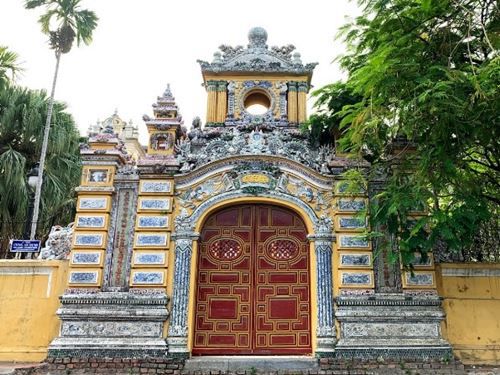
Hon Chen Palace
Hon Chen Palace, located on the slope of Ngoc Tran Mountain and facing the Perfume River, is surrounded by hills and mountains. This is the most sacred temple in Hue, housing relics of about 10 different architectural works with unique ancient decorations associated with different historical periods. Visiting Hon Chen Palace will be an opportunity for you to admire the ancient architecture, learn about religion, culture and indigenous people.
During March and July of the lunar calendar every year, the largest festival takes place at the palace when the space is filled with flowers, music and people.
Perfume River (Huong River)
Perfume River or Huong River is one of the most famous waterways in Vietnam that is considered as the symbol of Hue. The river is around 80 kilometers long and crosses the city of Hue. The best place to admire the view the Perfume River is from Thien Mu Pagoda or dragon boat. The journey on the river is usually the highlight for any Hue City tour. For the best experience on the Perfume River you can charter a dragon boat to admire the scenery of the ancient capital and enjoy the Hue folk songs of Hue that bring you back hundreds of years ago while watching the city sparkling with lights. Walkways along the river are also a great place to go for a scenic walk in the evening with family or friends.
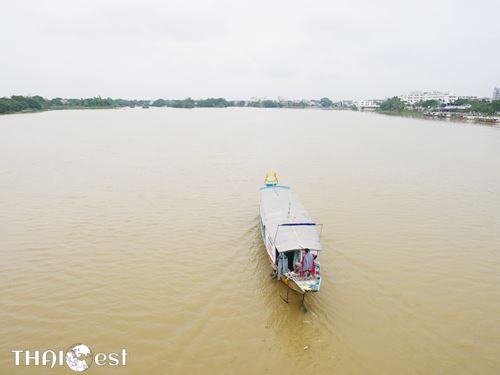
Don't miss a chance to see the magnificent sights from different point of view during Perfume River Private Dinner Cruise. You will also get to light paper lanterns and let them fly from the boat.
Alba Thanh Tan Hot Spring
Alba Thanh Tan Hot Spring is one of Vietnam’s most famous hot springs and an ideal health resort, located in Phong Son commune, about 30 km northwest of Hue City. Here, you can try free-hanging on the longest continuous zip-line as well.
Alba Thanh Tan Hot Spring is also home of Alba Wellness Resort By Fusion where you can stay and enjoy peaceful time surrounded by lakes, lush trees and mountains.
Lap An Lagoon
Lap An Lagoon, also known as Vung An Cu, is a large brackish water lake with an area of about 800 hectares, which is a part of Lang Co Bay. Located in Phu Loc District, about 70 km south of Hue, Lap An Lagoon is surrounded by the magnificent Bach Ma Mountain Range and Lang Co Beach with turquoise water. Lap An Lagoon is especially beautiful at sunset when the sun gradually disappears behind the majestic mountain range, the water surface begins to gradually turn orange in contrast with the deep green color of the lagoon water. This place is not only for sightseeing, as the farming and catching of oysters in this lagoon is very developed. If you will be coming here, don't miss the opportunity to enjoy delicious dishes made from local oysters.
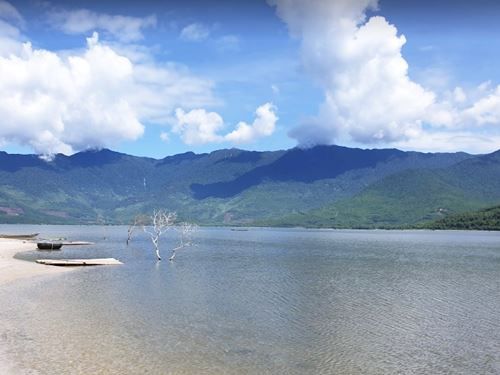
Bach Ma Mountain
Bach Ma Mountain is an attractive eco-tourism site at an altitude of 1,450 meters above sea level. This mountain, located 60 km south of Hue, is a natural boundary between two provinces of Vietnam, Thua Thien - Hue and Da Nang. Bach Ma is famous for its spectacular streams, forest, waterfalls and also trekking trails for those who want to explore and conquer the mountain themselves. At the top of the mountain, you will witness the panoramic view of Tuy Van Mountain, Hai Van Pass and the splendid Hue. You can spend the night camping in one of the campsites and spend the day swimming in sparkling blue lakes and admiring the beautiful mountain landscape and a variety of rare plants and animals in Bach Ma National Park. The best time to come here is summer or early autumn.
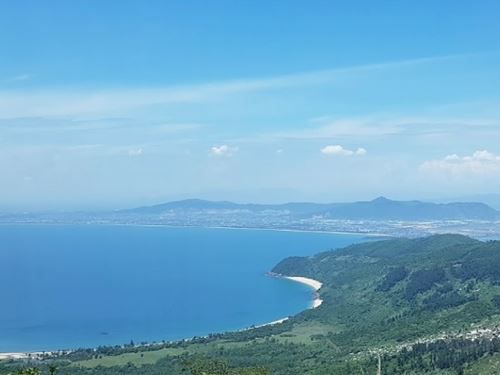
If you are adventurous person and want to challenge yourself, you can join Bach Ma National Park Trekking Day Tour. Not only trekking to the top of the mountain awaits you, as you will see 5 lakes, Do Quyen Waterfall, and more natural attractions along the way.
Vong Canh Hill
On the way to Tu Duc Tomb, there's a hill called Vong Canh Hill which is located about 7 km from Hue City. Although only 43 m high, this is the most ideal place for outdoor activities such as walking, relaxing along the romantic Perfume River and admiring the panoramic view of the city from above. At Vong Canh Hill, you will be surprised that Hue has such a peaceful place as it is completely different from the hustle and bustle of the Hue City center.
Hai Van Pass
Hai Van Pass is one of the most famous mountain roads in all Vietnam. With a length of 21 kilometers and height of up to 500 meters above the sea level, this mountain pass offers spectacular views of the clouds, mountains and sea.
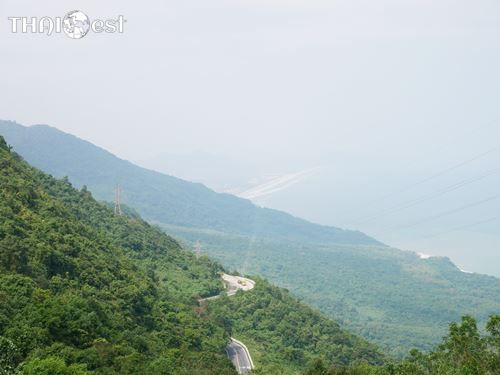
Tam Giang Lagoon
Tam Giang Lagoon is located about 15 kilometers from Hue City. This is the largest brackish lagoon in Southeast Asia. This place is known by many tourists for its wild and idyllic beauty, along with the rustic and simple life of local people. You can rent a boat to visit the fishing village of Thai Duong Ha.
You can join Tam Giang Lagoon Private Half Day Tour with Seafood Dinner to immerse yourself in the beautiful, rural setting of Thua Thien Hue province and experience fishing with locals.
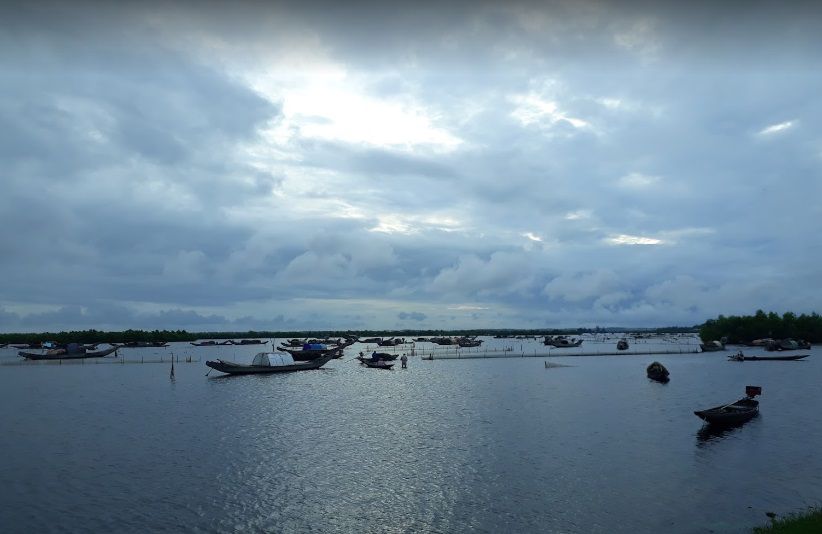
Beaches in Hue
Beaches in Hue are really fascinating and beautiful. Not surprisingly, they are always in the top list of the most beautiful beaches in Central Vietnam.
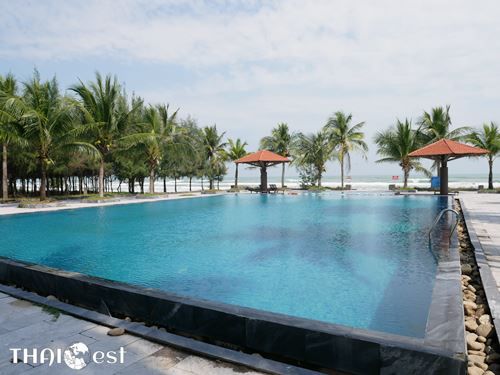
Lang Co Beach
Lang Co Beach is ranked among the most beautiful beaches in Vietnam as its endless white sand embraces the emerald-blue coastline, along with immense green forests on majestic mountains. Moreover, many resorts here are ready to give you a dream vacation, away from the busy city.
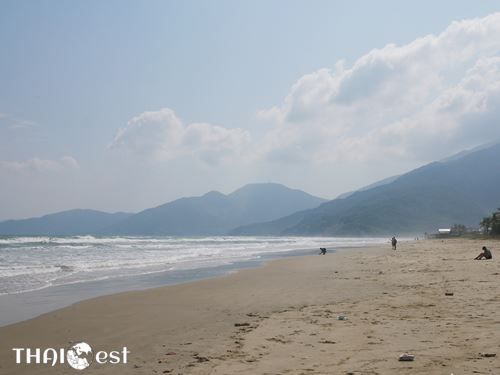
Thuan An Beach
Thuan An Beach is located in Thuan An town, Phu Vang district, about 15 km from Hue City. The place is attractive to tourists because of its gentle and peaceful beauty. In particular, this beach is a destination to watch the sunrise and also an ideal place for refreshing and swimming.
Canh Duong Beach
Canh Duong Beach is no less beautiful than the two beaches mentioned above. With a 200 m wide strip of sand stretching for 8 km, Canh Duong Beach is located about 60 km from Hue City. The beach has a gentle slope, fine white sand, and clear blue sea. This beach is not only for relaxation but also a perfect place to have fun with friends and family as well as to take awesome photos.
Trang Tien Bridge
When you will be coming to the Perfume River, don't forget to visit Trang Tien Bridge. The bridge is undoubtedly the most well-known bridge in Hue. Trang Tien Bridge was designed by Gustave Eiffel, the world-famous architect who designed the Eiffel Tower. From the bridge spanning the poetic and beautiful Perfume River you can see the panoramic view of the imperial city.
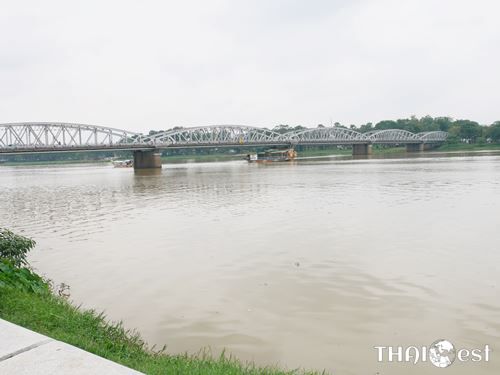
Dong Ba Market
After crossing Trang Tien Bridge, you just need to walk 100 meters to get lost in the busiest market in the ancient capital - Dong Ba Market. This is one of the largest and oldest shopping destinations in Hue, associated with the hundred-year history of the Nguyen Dynasty.
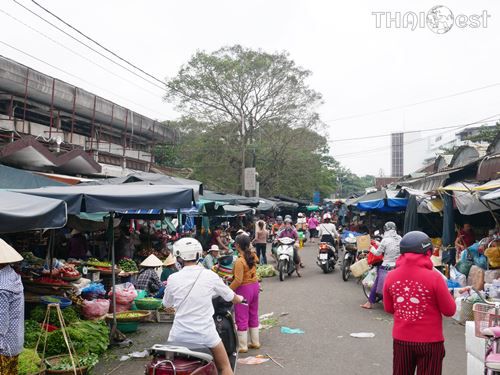
The market sells a full range of goods, clothing, souvenirs, and jewelry. Here you can observe the daily life of local people and enjoy the famous Hue specialties such as mussel rice, beef noodle, and spring rolls.
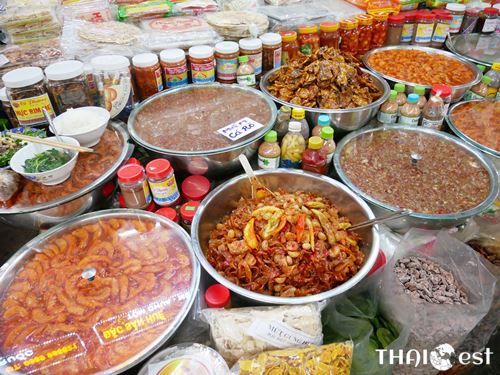
Some of the best places to exchange money in Hue are located on the opposite side of the street.
Phu Cam Church
Phu Cam Church is one of the largest, most famous and oldest churches in Hue. The church was started to be built during the reign of the Nguyen Dynasty and was completed in nearly 40 years because of the war and bombings. Phu Cam Church is an example of modern architecture, designed by architect Ngo Viet Thu. The church can accommodate up to 2500 people attending the ceremony.
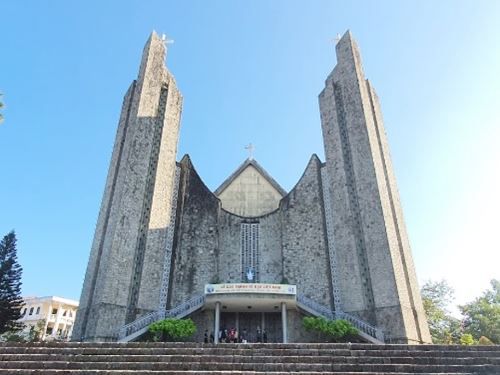
Hue Walking Street
Hue Walking Street or Hue Night Market was opened at the end of September 2017. It consists of the streets of Chu Van An, Pham Ngu Lao and Vo Thi Sau. These are the streets where most of foreign tourists are staying, so it’s convenient to find accommodation, tourist information and restaurants. At Hue Walking Street you can enjoy various Hue local dishes, street music performances or sip some drinks with friends. The night market is operating from 18:00 to 2:00 every Friday, Saturday and Sunday.
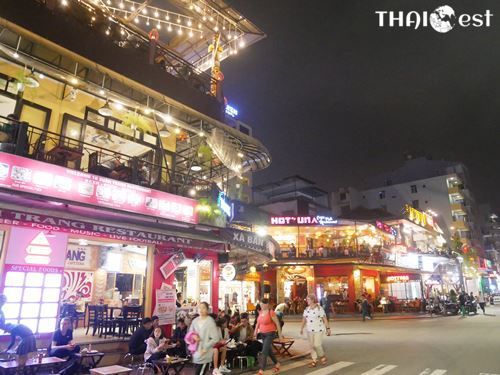
Hue Royal Court Music
Hue Royal Court Music is the first intangible heritage of Vietnam to be recognized by UNESCO as a “Masterpiece of the Oral and Intangible Heritage of Humanity” in 2003. This is the only traditional royal music in this ancient capital. You can enjoy musical talents with elaborate instruments performed in Hue. Previously, Hue Royal Court Music was performed only on festivals such as the coronation during the 5 Nguyen dynasties.
Tips
Updated ticket prices for the top tourist attractions in Hue can be found here: Price of Tickets to Complex of Hue Monuments.
Information about the best ways for getting around Hue will be really useful when planning your visit to the selected tourist attractions of the imperial city.
Wondering what to eat in Hue? We've got a complete guide to Hue cuisine to help you to decide what and where to eat in Hue.
